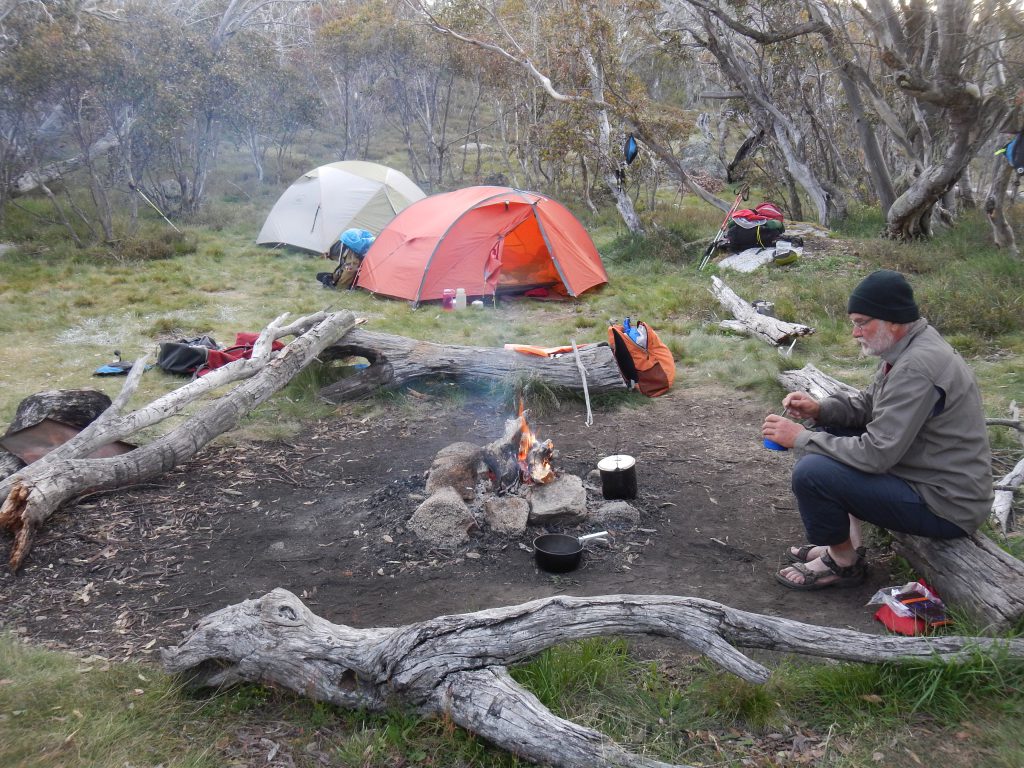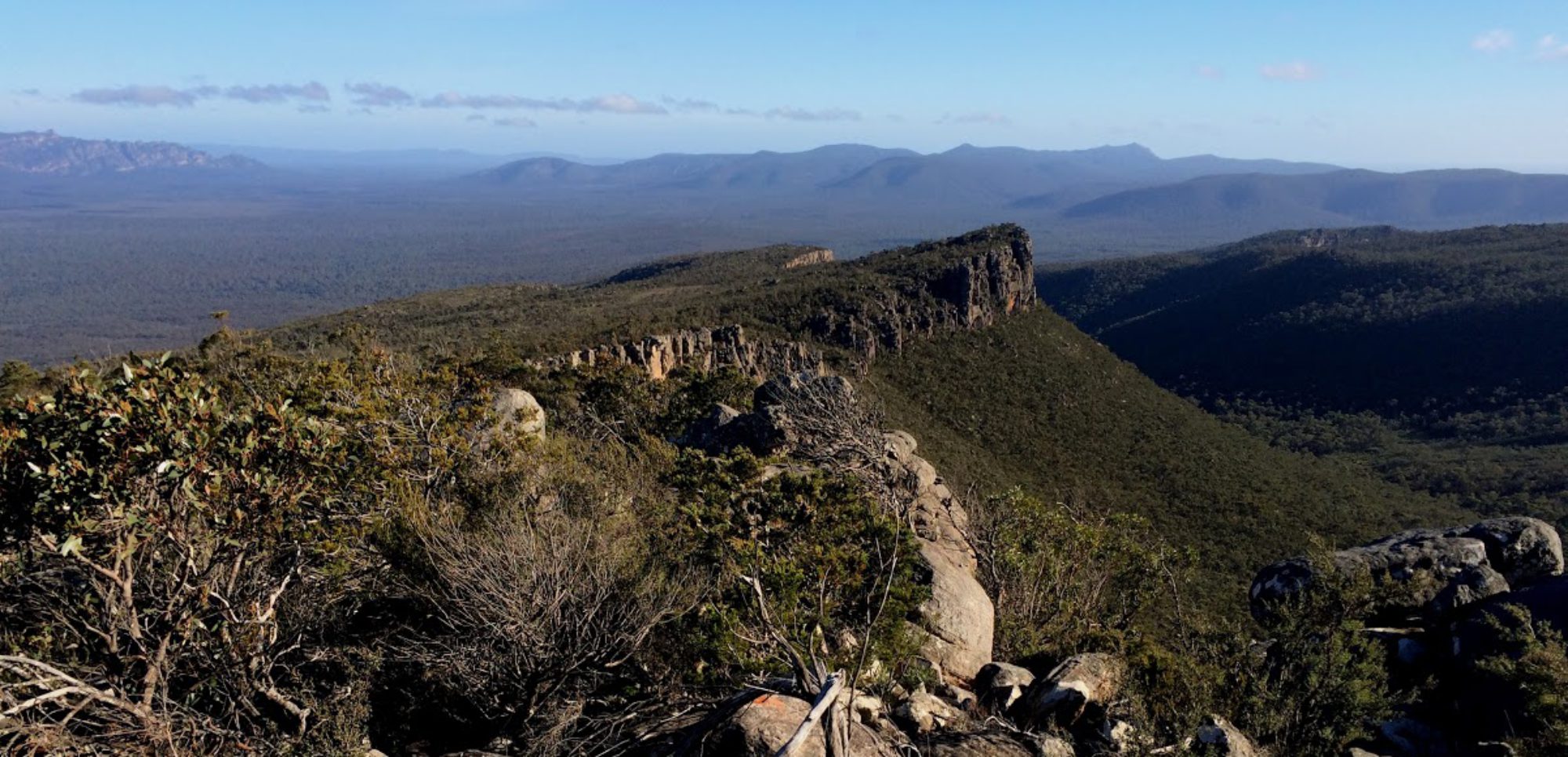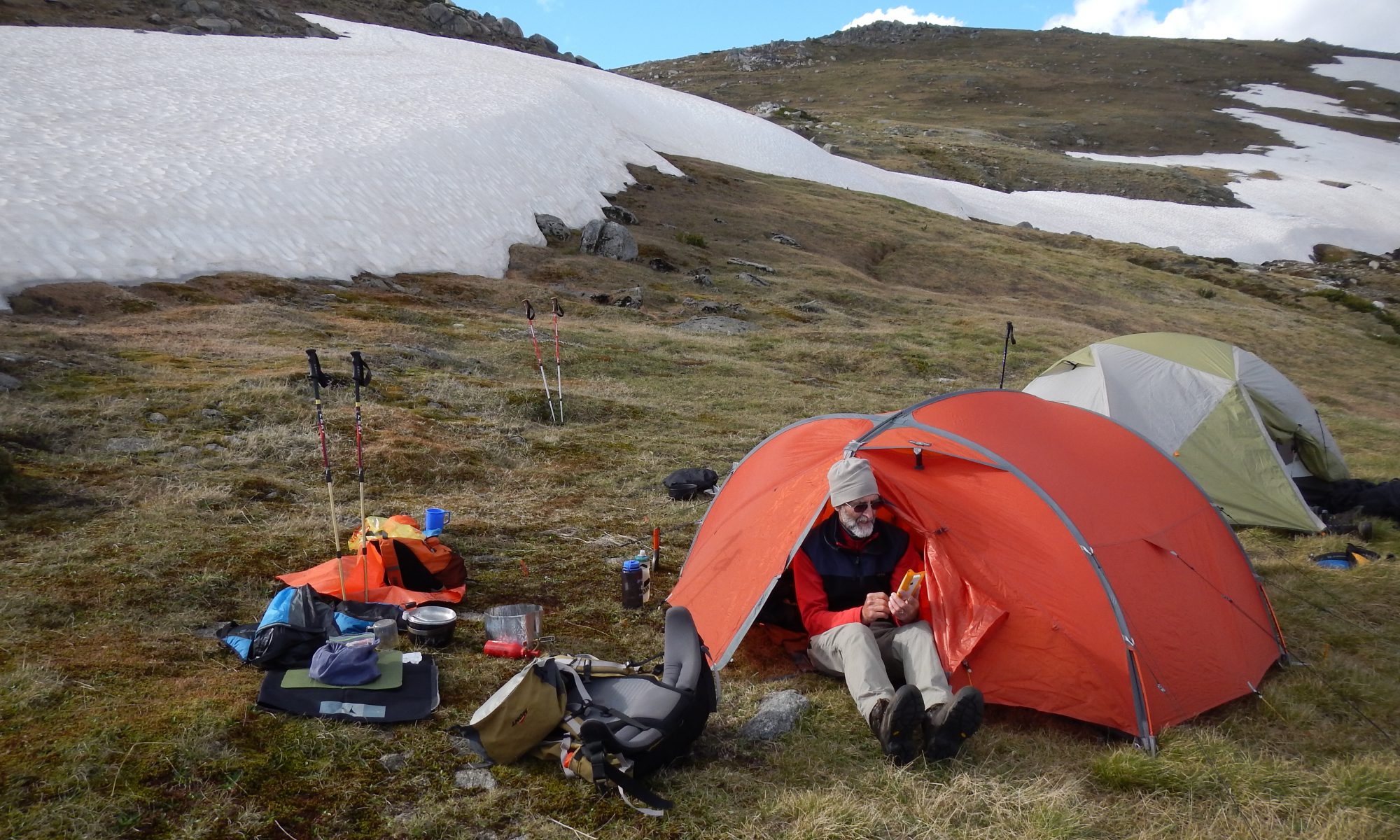Reading Time: 4 minutes
Camping is one of the most enjoyable features of the outdoors – a good camp is a place where walkers and skiers can rest, relax and enjoy the peace and beauty of remote environments. Campsites provide opportunities for social interactions, appreciating the surroundings, telling stories, reviewing the day’s adventures and planning the next stage.
Setting up camp
Camping early allows plenty of time before dark to pitch tents, settle in and prepare meals in daylight. This is a good approach for easy trips.
Experienced walkers completing a long tough trip may decide to camp late on occasions, and need to be prepared to and able to camp in the dark.
Use established campsites, do not clear new sites and comply with any local restrictions. Camp where there is shelter and water. Don’t dig drains around tents. If drains seem necessary choose another spot.
Where possible, camp at least 20 metres from any creek, lake or wetland.
Check for hazards such as:
- Overhead branches
- Leaning, damaged or dead trees
- Poor drainage, flooding risk
- Exposure to wind.
Avoid exposed campsites such as:
- High ground, especially if electrical storms are forecast or observed
- Open ridge tops and saddles if there is any possibility of strong wind
Challenging camps
There may be occasions when camping in a difficult location is unavoidable. For example:
- Campsites are limited, rough or exposed
- Water is hard to locate or distant
- It is late and the group is weary.
Leaders and experienced members should ensure the group works cooperatively and that weary members are supported and not left to their own devices.
If locating water is difficult a couple of experienced members should seek it out.
Camp hygiene
Do not use any soap in water holes or streams as it will pollute the water for animals and other walkers. Wash dishes away from the stream using water from a bag or water bottle.
Use designated toilet areas well away from the water supply and tracks. Before you leave a campsite, check that it is spotless.
See Washing up for more information.
Stove safety
Stoves are convenient to use and greatly increase comfort and safety, especially in challenging weather conditions.
However, stoves and their fuel can be very dangerous if poorly maintained or used carelessly.
- Learn to use a new stove at home before a trip
- Use good quality fuel containers for liquid fuel stoves
- Never use a stove inside a confined space such as a snow cave or inside a tent. Carbon monoxide poisoning is insidious and can be deadly. Fatalities have occurred.
- When using a stove in a tent vestibule, keep the stove away from tent and fly walls. Be especially careful of flapping doors or flys. Tents are highly inflammable.
- Be particularly careful when priming liquid fuel stoves – they may flare up
- Operate the stove on a stable and level surface.
- Refill the stove or change gas cylinder away from a fire or other stoves.
- Check carefully for any fuel spill or gas leak. Stove fuel is highly inflammable.
- Ensure the stove is cool before packing it away
- Inspect the stove and fuel containers after every trip.
See Stove safety for more information.
Campfires

Campfires, once the only means of cooking food in the bush, are now much less common. Some groups may decide to not use campfires. Bushwalkers and ski tourers have seen the degradation of popular campsites resulting from the stripping of almost everything that will burn. Bushwalkers now routinely use liquid fuel or gas stoves. They are much more convenient and controllable, and are not very heavy to carry.
Campfires are banned in many bushwalking and ski-touring areas across Australia to protect sensitive environments, preserve habitat and reduce ecological damage.
Total Fire Bans
Each State has provision for Total Fire Bans. Be aware of the declaration of a Total Fire Ban in the district where walking and camping. On an extended trip, take a small radio or check fire ban information using a mobile phone. It is prohibited to light a campfire on a day of total fire ban, or to use a portable stove.
Fire safety and protecting the environment
Safety with camp fires is paramount:
- Know and follow State and National Parks camp fire regulations (including fuel stove only areas)
- Never light a fire or stove on a Total Fire Ban day
- Never light a fire in hazardous circumstances such as strong winds
- Ensure there is plenty of water to thoroughly extinguish it
- Never leave a camp fire unattended
- Supervise children around camp fires
Consider not having one!
Fire regulations may differ in each State, but their intention – to prevent bushfires and protect the environment – does not. Each year, some bushfires are unintentionally started by campers and bushwalkers.
In the interests of safety and the environment, ensure that:
- A camp fire is downwind of and well away from tents, noting that wind direction can change
- The fire is as small as possible for your needs and use firewood sparingly
- The fire is completely contained in a fireplace or trench, preferably in an existing fireplace
- The area three metres around and above the fire is clear of flammable material
- An adult is in attendance and monitors the fire at all times
- Rubbish is not burnt in the fire. It stinks and rarely burns completely, thus polluting the site and attracting animals.
- Sufficient water is on hand to thoroughly extinguish the fire and in case of an emergency
- The fire is extinguished overnight. Wind can spring up during the night and fan embers into flammable material
- The fire is completely extinguished using water, not soil, before you leave.
- If the camp fire is in a new site, rehabilitate the area and scatter cold wet ashes and partially burnt wood.
Collecting firewood
The impact of firewood collection is one reason fires are not permitted in many areas, due to the cumulative environmental damage.
Where fires are permitted:
- Gather firewood well away from the campsite to disperse the impact of collection
- Collect no more firewood than is required for a modest fire
- Ideally use branches of fallen dead trees or limbs. Timber lying on the ground is usually damp or rotten and will not burn well.
- Don’t use green timber
- Don’t use hollow logs – they provide habitat

